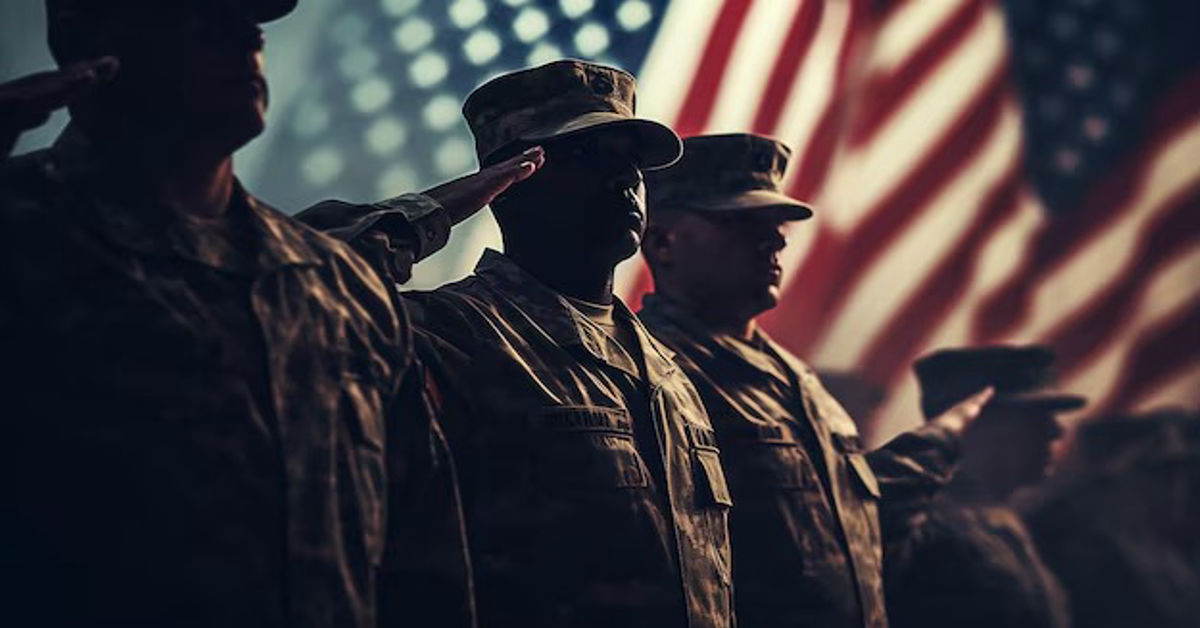When a governor announces an emergency declaration the decision is not taken lightly. In Nebraska, Jim Pillen captured headlines after mobilizing the National Guard to prepare for demonstrations expected across the state. His reasoning was rooted in readiness a belief that safety must be prioritized before potential unrest erupts. The move shortened response times for Guard activation, ensuring a rapid presence in Omaha, Lincoln and other high-traffic areas.
The declaration was particularly notable because it came before any violence occurred. This preemptive stance positioned Pillen as a leader willing to act quickly rather than wait until events spiraled out of control. Yet, the timing sparked debate. Supporters applauded the foresight, while critics viewed it as fear-driven and unnecessary. Nebraska suddenly found itself at the center of a broader conversation about how much power governors should wield in the name of public safety and order.
Historical Role of the National Guard in Nebraska
The Nebraska National Guard has a deep history of service within the state and beyond. Its responsibilities have traditionally involved disaster relief, supporting communities after floods, wildfires, and storms. Citizens often see the Guard as neighbors in uniform, stepping forward when resources are scarce. This strong tradition of disaster response has cemented their reputation as protectors during moments of vulnerability.
In modern times, however, the Guard’s role has expanded. Increasingly, it has been deployed during moments of civil tension, where public demonstrations risk evolving into unrest. While this aligns with national trends, it raises different public sentiments. Some Nebraskans feel reassured by the Guard’s readiness, while others fear a drift toward militarization of civic life. This historical evolution demonstrates how the Guard is not static but adapts to the state’s changing needs, reflecting broader shifts in how society perceives safety and authority.
Context Behind Recent Mobilizations
Protests have become more frequent across Nebraska’s urban centers, fueled by national and local issues alike. From immigration policies to economic concerns, demonstrations reflect a wide spectrum of political energy. Governor Pillen’s emergency declaration was tied to these scheduled rallies, particularly in Omaha and Lincoln, where large gatherings were expected.
Law enforcement raised alarms that they might not have the manpower to manage large crowds while also protecting critical events like the College World Series. For the governor, the choice was whether to risk delayed responses or to prepare in advance. He opted for the latter, framing it as a decision based on caution rather than confrontation. For citizens, this raised the question of whether preparation crossed the line into suppression, a debate that continues to shape Nebraska’s political discourse.
Legal Framework for Guard Activation
The governor of Nebraska has the legal authority to activate the National Guard when state security or public safety is at stake. This framework is built on a balance between swift decision-making and respect for constitutional rights. Emergencies—whether natural or social—fall under this scope. Pillen’s declaration streamlined activation procedures, meaning Guard members could be on duty within hours instead of days.
However, this legal flexibility comes with controversy. Civil rights advocates argue that preemptive deployment can erode public trust, creating the perception of government overreach. Others counter that without such powers, leaders would be unable to act quickly in emergencies. The tension lies in how frequently and under what circumstances these laws should be applied. Nebraska’s case highlights the ongoing challenge of balancing efficiency with restraint, ensuring that authority remains legitimate in the eyes of the people.
Impact on Public Safety and Security
The Guard’s activation was intended to bolster security during high-profile events and public demonstrations. Local police often face strain when managing both routine duties and large gatherings, making reinforcement crucial. With Guard units on standby, Nebraska sought to minimize risks such as crowd clashes, property damage, or disruptions near major venues. For many residents, this offered a sense of protection, especially for families attending events.
Still, the strategy was not universally welcomed. Some argued that the presence of military uniforms among protestors could inflame tensions rather than reduce them. Instead of calming nerves, it risked escalating confrontations by creating an atmosphere of intimidation. Whether the activation achieved its goal depends largely on perspective. Supporters view it as a shield, while opponents see it as a sword. Both interpretations reveal the complexity of managing public safety in a state that values both order and liberty.
Security Considerations Behind Guard Deployment
| Security Concern | Police Capacity | Guard Contribution | Outcome Sought |
| Large protest turnout | Limited crowd control | Extra manpower and logistics | Prevent escalation |
| High-profile events | Risk of disruption | Securing venues | Safe environment for attendees |
| Emergency response time | Potential delays | Rapid activation within hours | Swift containment |
| Public reassurance | Strained trust | Visible presence | Community confidence |
Pillen’s Leadership Style and Decision Making
Jim Pillen has cultivated a reputation for decisive action. His approach to governance reflects a belief that leadership requires clear direction, particularly in moments of uncertainty. Activating the Guard before protests began embodied this style, prioritizing prevention over reaction. Supporters argue that such decisions demonstrate strength and responsibility. They see in Pillen a leader who does not wait for problems to escalate before addressing them.
Yet decisiveness comes with risks. Quick moves can bypass dialogue, leaving communities feeling excluded from decisions that affect them. Critics argue that trust is eroded when leaders appear heavy-handed, especially on matters tied to constitutional rights. In Pillen’s leadership, Nebraskans see both the value of preparedness and the dangers of overreach. His decision serves as an example of how leadership style shapes not just policy outcomes, but also public confidence in government.
Public Response to the Nebraska National Guard Deployment
The reaction to the Guard’s activation was deeply divided. On one side, many Nebraskans expressed relief that the government was taking safety seriously. Families planning to attend events felt reassured by the presence of soldiers. Business owners near protest sites appreciated the sense of stability the Guard promised to provide.
On the other side, activists and civil liberties groups criticized the decision. They feared that a visible military presence would intimidate demonstrators and discourage participation. To them, the activation symbolized government mistrust of its own citizens. This split reflects broader national divisions, where debates over authority and protest rights have grown sharper. For Nebraska, the deployment became more than a security measure—it became a test of how communities view their relationship with state power.
Media Portrayals and Public Perception
Media coverage played a significant role in shaping how Nebraskans understood the Guard’s presence. Local outlets often focused on logistics, describing where troops would be stationed and what roles they would serve. This practical framing helped many residents see the move as simply another layer of safety.
National coverage, however, tended to link the decision to broader political narratives. In this framing, Nebraska’s Guard activation was part of a larger debate about how states respond to civic unrest. This narrative colored perception, with some readers interpreting the move as excessive based on how headlines presented the story. The influence of media reveals that public opinion is not shaped by decisions alone, but by how those decisions are communicated and contextualized.
Media Framing of the Guard’s Activation
| Media Type | Focus of Coverage | Public Effect |
| Local Nebraska outlets | Logistics, troop numbers, safety goals | Reassurance for residents |
| National news networks | Political context, national comparisons | Heightened criticism or support |
| Opinion columns | Civil liberties debate | Polarization of public opinion |
| Social media platforms | Viral discussions and imagery | Amplified emotions and reactions |
Comparisons with Other States’ Emergency Actions
Nebraska’s decision to mobilize the Guard aligns with trends seen in other states. Leaders across the country have increasingly turned to Guard units during protests, citing safety and rapid response as primary justifications. In Texas and Missouri, for instance, Guard deployment often followed outbreaks of unrest. Nebraska differed by acting in anticipation of possible trouble, not after it began.
This proactive approach highlights a divergence in leadership philosophy. Some governors wait until violence occurs, preferring not to escalate situations prematurely. Others, like Pillen, argue that readiness prevents chaos from materializing. Both strategies carry risks, and both have defenders. By comparing Nebraska with other states, citizens gain insight into how different leadership approaches produce different public reactions. For policymakers, these comparisons offer lessons in balancing authority, preparedness, and civil liberties.
Long-Term Implications for Civil Liberties
Activating the Guard before unrest materializes raises long-term questions about civil liberties. Legal scholars warn that normalization of such measures could create a chilling effect, discouraging people from exercising their right to protest. If every large demonstration triggers military oversight, public confidence in free assembly may erode over time.
At the same time, proponents argue that proactive security protects freedoms by preventing chaos that could endanger participants themselves. The debate illustrates a paradox: measures meant to secure rights can also appear to restrict them. Nebraska’s experience thus contributes to a national conversation about the boundaries of protest, authority, and democracy. The true legacy of Pillen’s decision may not be measured in days, but in how future generations interpret the balance between liberty and order.
Role of the Guard in Protecting Major Events
Large events in Nebraska, such as the College World Series, attract significant crowds and attention. These gatherings require extensive security planning even in normal times. With protests scheduled nearby, the stakes grew higher. The Guard’s deployment was framed partly as a way to ensure these events could proceed without disruption, keeping participants safe and maintaining Nebraska’s reputation for hospitality.
For many, this rationale was compelling. Event organizers and attendees welcomed the additional support. Yet others questioned whether soldiers in uniform were appropriate in celebratory spaces. Their presence raised concerns about the atmosphere of festivals and sports gatherings, potentially changing how people experienced them. The decision illustrated how public safety and public enjoyment are sometimes in tension, with leaders tasked to strike a delicate balance.
Guard’s Role in Event Protection
| Event Type | Potential Risk | Guard Function | Public Reaction |
| Sporting tournaments | Large crowds, disruptions | Crowd management, venue security | Mixed, many reassured |
| Cultural festivals | Street demonstrations nearby | Traffic control, emergency support | Concern over militarized feel |
| Political rallies | Counter-protests and clashes | Separation of groups, quick response | Viewed as necessary by some, suppressive by others |
Balancing Free Speech and Public Order
At the heart of Nebraska’s debate is the balance between free speech and order. The right to protest is fundamental, yet no government can ignore risks to safety Pillen National Guard Nebraska. Pillen’s decision embodied this dilemma. Authorities pledged that peaceful assembly would remain protected, but critics feared the Guard’s presence would discourage participation.
This struggle is not unique to Nebraska—it is a tension present in every democracy. Ensuring both liberty and safety is a constant negotiation. The Nebraska case shows how leadership choices tilt the balance in one direction or another. Whether Nebraskans feel their freedoms are respected will depend on how these choices evolve over time, and how consistently leaders uphold both security and constitutional rights.
Future of the Nebraska National Guard under Pillen
Looking forward, it is clear that the Nebraska National Guard will remain central to the state’s emergency strategies. Governor Pillen’s reliance on the Guard reflects a philosophy that emphasizes readiness and control. Future crises—whether natural, civic, or political—are likely to see similar reliance on Guard activation.
The real question is how Nebraskans will respond. If trust grows that the Guard protects without suppressing, its role will be seen positively. If mistrust deepens, each deployment will fuel greater criticism. Nebraska now stands at a crossroads where leadership, law, and liberty intersect. The future of the Guard under Pillen will be defined not just by policy, but by how effectively the state balances preparedness with respect for its people.
Conclusion
The story of pillen national guard nebraska is not just about a single emergency declaration—it is about leadership, law, liberty, and the delicate balance between them. Governor Pillen’s decision sparked debate that will shape Nebraska’s civic life for years to come Pillen National Guard Nebraska. Whether seen as protection or suppression, the Guard’s presence highlighted the challenges of governing in a divided era. For Nebraskans, this moment reflects the constant negotiation between security and freedom that lies at the heart of democracy.
FAQs
1. Why did Governor Pillen activate the Nebraska National Guard?
He activated it to prepare for large protests and major events, prioritizing safety and readiness.
2. How is the Guard usually used in Nebraska?
Traditionally, the Guard helps with disaster relief, emergency response, and occasionally with civil unrest.
3. What concerns did critics raise?
Critics argued the move risked intimidating protestors and discouraging free expression.
4. How did the media influence perception?
Local media emphasized safety, while national outlets framed it as part of a larger political debate.
5. Will the Guard continue to be used in similar situations?
The decision set a precedent, suggesting future leaders may also rely on the Guard during civic unrest.







